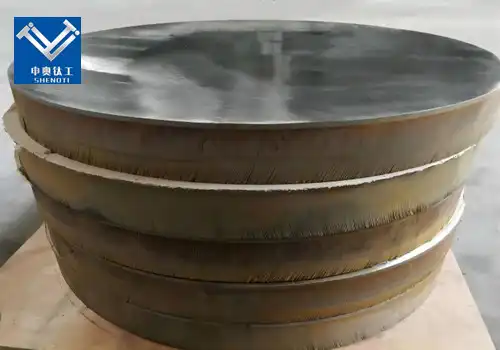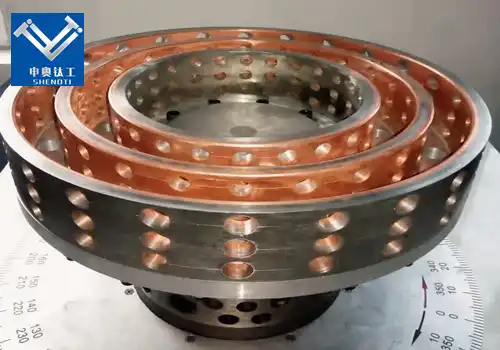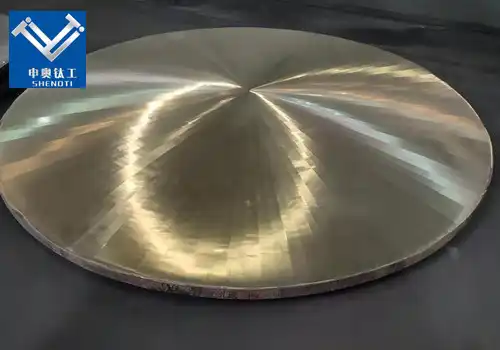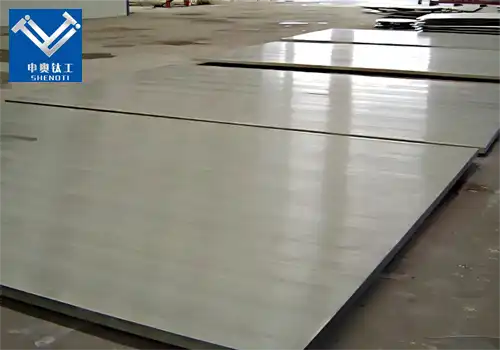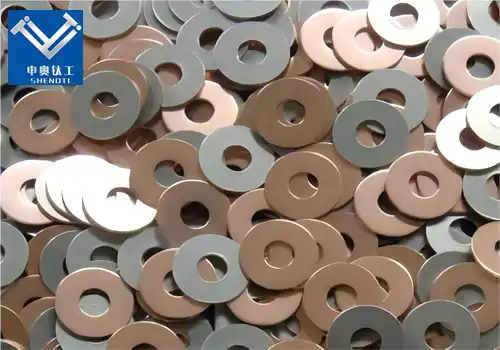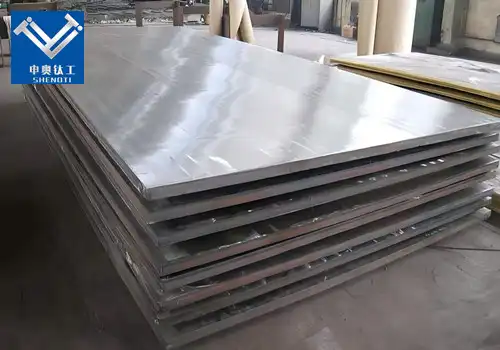
Advantages of Niobium Copper Clad Plates Over Other Bimetallic Composites
2025-07-08 15:48:15
What Is a Niobium Copper Clad Plate?
A niobium copper clad plate is a high-performance bimetallic composite that integrates the excellent corrosion resistance and high melting point of niobium with the outstanding thermal and electrical conductivity of copper.
Niobium copper clad plates are widely used in high-tech sectors including aerospace, electronics, vacuum devices, metallurgy, chemical processing, and nuclear industries, where their unique properties meet the most demanding technical requirements.
Why Is Niobium Used in Copper Clad Plates?
Exceptional Corrosion Resistance
Niobium is highly resistant to acids such as hydrochloric and sulfuric acid, making it ideal for environments where standard materials would quickly degrade. In corrosive chemical and electrochemical processes, niobium acts as a protective barrier that extends the service life of equipment.
Excellent Thermal and Electrical Properties of Copper
Copper, on the other hand, offers excellent thermal conductivity (around 400 W/m·K) and high electrical conductivity, making it perfect for applications that require efficient energy transmission. When niobium and copper are combined in a clad plate, the resulting material benefits from both worlds—mechanical strength, corrosion resistance, and excellent conductivity.
Strong Metallurgical Bonding
Using explosion welding or roll bonding techniques, the interface between niobium and copper is free from cracks, delamination, or voids, ensuring a reliable and long-lasting bond that performs well under extreme temperatures and stress conditions.
Applications of Niobium Copper Clad Plates in Modern Industry
1. Vacuum Electronics and Particle Accelerators
In high-vacuum environments such as vacuum tubes, particle accelerators, and linear colliders, niobium copper clad plates are frequently used due to niobium's low outgassing rate and excellent superconducting properties. These plates offer structural support while allowing efficient cooling and minimal interference in sensitive electromagnetic environments.
2. Nuclear and Fusion Reactors
Niobium's radiation resistance and copper's heat transfer capability make niobium copper clad plates ideal for nuclear reactor internals and fusion reactor components. The bimetal helps manage high heat flux while resisting irradiation damage.
3. Chemical Processing Equipment
Niobium copper clad plates are increasingly adopted in heat exchangers, reaction vessels, and acid regeneration equipment in the chemical and pharmaceutical industries. Niobium provides superior corrosion resistance, while copper ensures rapid heat exchange, essential in high-efficiency chemical reactions.
4. Aerospace Components
In aerospace applications, weight, conductivity, and corrosion resistance are critical. Niobium copper clad plates are used in spacecraft shielding, connectors, and high-stress components exposed to oxidizing or high-temperature environments.
5. Medical and Biomedical Fields
Due to niobium’s biocompatibility, niobium copper clad materials are sometimes used in MRI shielding, medical implants, and advanced imaging devices. The copper ensures signal integrity, while niobium interacts safely with biological tissues.
How Is a Niobium Copper Clad Plate Manufactured?
Explosion Bonding Technique
Explosion welding (or explosive bonding) is the most common method used to manufacture niobium copper clad plates. In this process, a controlled explosive charge propels a niobium plate onto a copper substrate at high velocity. The result is a clean, solid-state bond formed by high-pressure impact, preserving the properties of both metals without melting them.
Quality Control and Testing
Every niobium copper clad plate undergoes rigorous quality control processes, including ultrasonic testing, shear strength tests, and metallographic analysis. These tests ensure that the interface has no delaminations, cracks, or weak zones, meeting ASTM, ASME, or customer-specific standards.
Advantages of Niobium Copper Clad Plates Over Other Bimetallic Composites
Superior Interface Integrity
The interface between niobium and copper in a niobium copper clad plate is continuous and metallurgically bonded, eliminating the risk of separation or galvanic corrosion often observed in mechanically bonded or plated materials.
Optimized Thermal and Electrical Efficiency
Compared to stainless steel or titanium-clad copper, niobium copper clad plates offer better thermal and electrical performance while maintaining structural stability in harsh environments.
Lightweight and Durable
Niobium is lighter than many other refractory metals and offers an excellent strength-to-weight ratio, especially when combined with copper. This makes the material highly suitable for aerospace and defense industries.
Customization and Process Flexibility
Niobium copper clad plates can be customized in terms of layer thickness, overall dimensions, and surface treatments based on specific end-use requirements. The versatility in design adds value for manufacturers and end-users alike.
Key Technical Parameters of Niobium Copper Clad Plate
|
Parameter |
Specification |
|
Niobium Purity |
≥99.9% |
|
Copper Grade |
T2, C11000 or custom |
|
Bonding Method |
Explosion welding + rolling |
|
Thickness Ratio |
Customizable (e.g., Nb: 1–3mm, Cu: 3–30mm) |
|
Width & Length |
Up to 2000mm width, 6000mm length |
|
Bond Strength |
≥135 MPa |
|
Operating Temperature |
Up to 800°C |
These parameters can be adjusted based on your application—whether you need ultra-thin niobium for precise components or thicker copper for high-conductivity requirements.
How to Choose a Reliable Niobium Copper Clad Plate Manufacturer
1. Experience and Expertise
Choose a manufacturer with experience in producing explosion-bonded clad metals, especially involving refractory materials like niobium. Ask for previous project cases in aerospace, nuclear, or electronics.
2. Custom Engineering Capabilities
An ideal partner should offer customized services such as CAD modeling, prototype development, mechanical testing, and CNC machining to meet your precise needs.
3. Certifications and Quality Assurance
Ensure the supplier complies with ISO 9001, ASTM standards, and possibly ASME or nuclear-grade certifications. Third-party inspection reports are also a good sign of quality control.
4. On-Time Delivery and After-Sales Support
Timely delivery and professional technical support are essential, especially for industries operating under tight project deadlines and strict technical tolerances.
Is Niobium Copper Clad Plate Conductive?
Yes. Thanks to the copper layer, niobium copper clad plates exhibit high electrical and thermal conductivity, making them ideal for electronic and vacuum applications.
What Is the Melting Point of a Niobium Copper Clad Plate?
The melting point of the materials remains separate: copper melts at 1085°C, and niobium melts at 2477°C. The composite structure takes advantage of this disparity for high-temperature stability.
Is Niobium Reactive with Other Metals?
Niobium is generally non-reactive and forms a passive oxide layer that protects it from corrosion. It’s often alloyed or bonded with metals like copper, tantalum, or titanium in multi-metal composites.
About Us
Baoji ShenAo Metal Materials Co., Ltd. is a leading manufacturer of multi-metal clad plates with a focus on explosion welding technology. Located in China’s titanium valley—Baoji—we specialize in producing niobium copper clad plates, titanium clad plates, zirconium composites, and other high-end bimetallic products.
With over a decade of experience, strict quality control, and a global export footprint, we are your trusted partner for customized clad solutions.
Contact Us
Email: zh@baojiti.com.cn
Website: www.shenaocladplate.com
Phone: +86-0917-000000
Address: Baoji City, Shaanxi Province, China
YOU MAY LIKE












